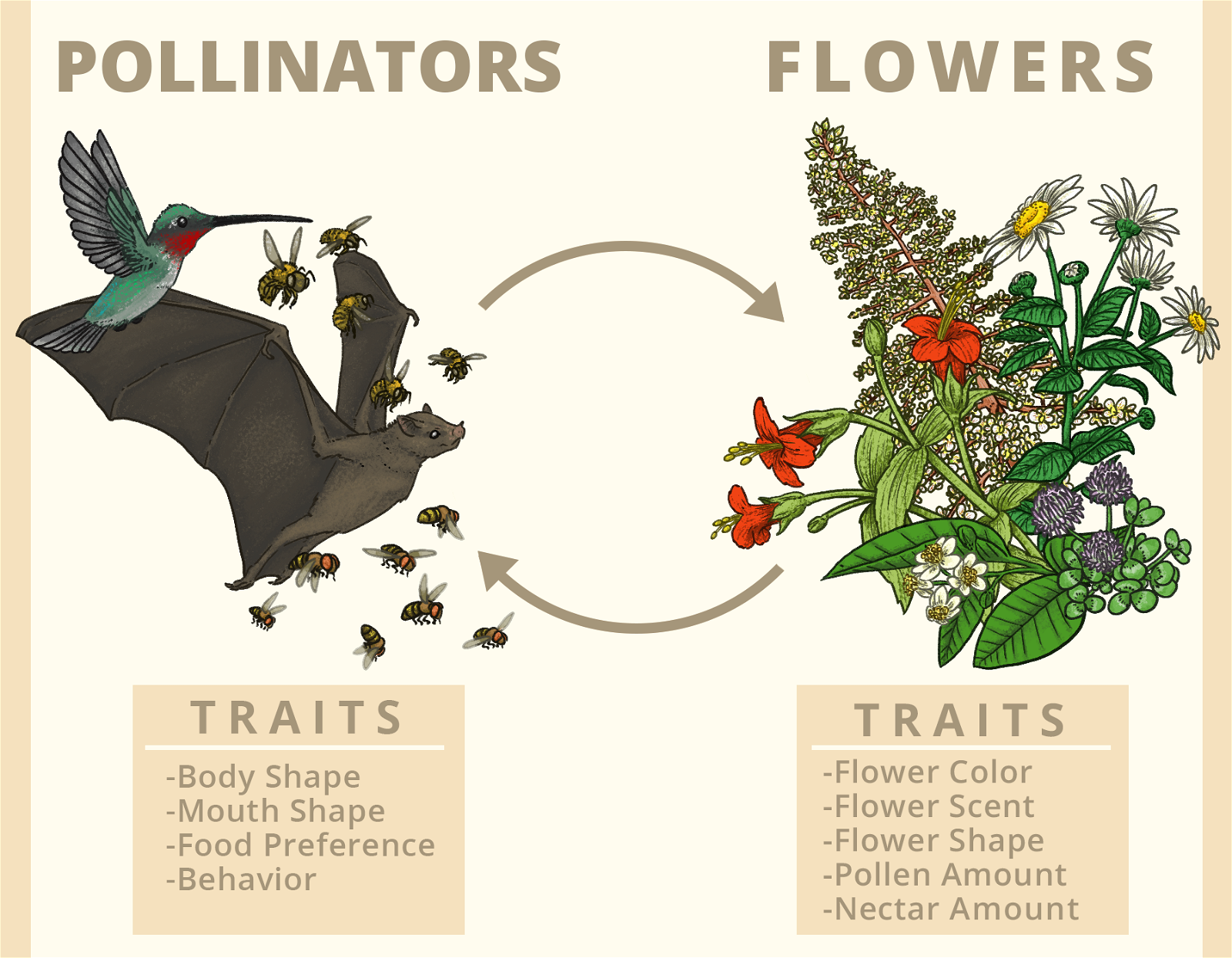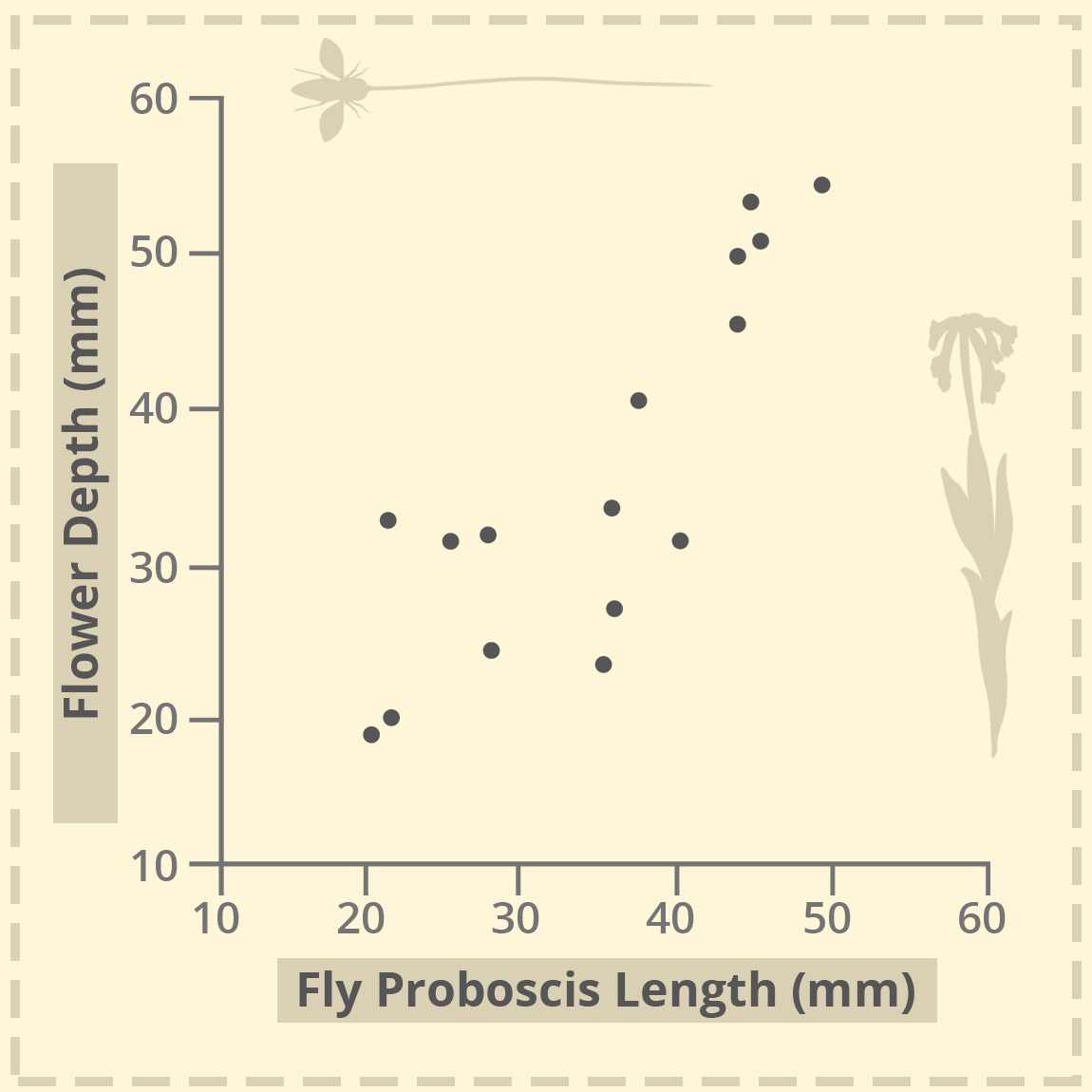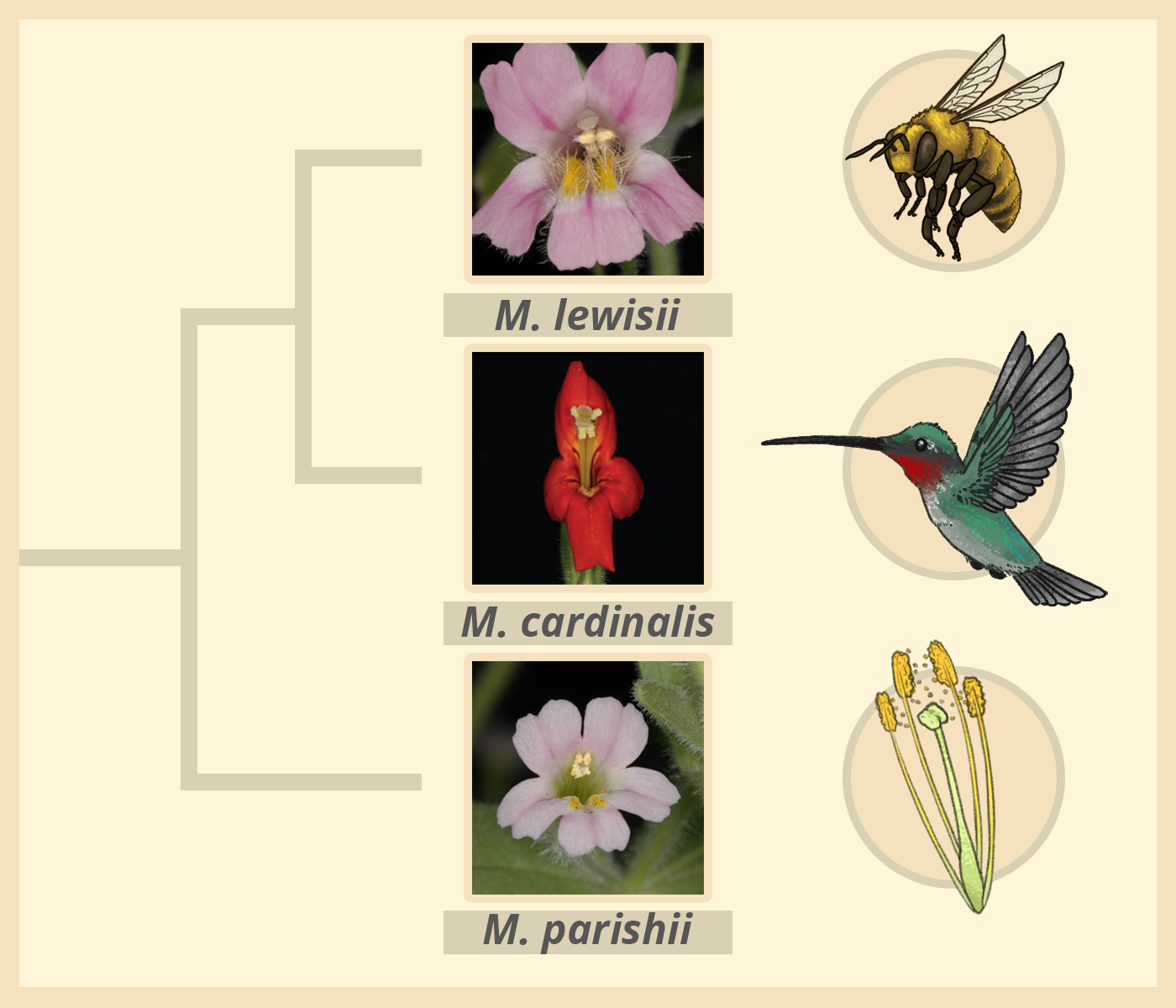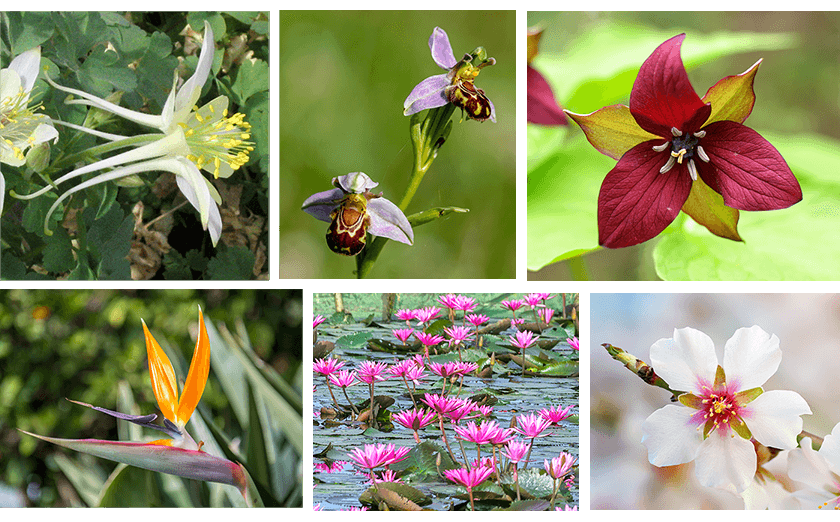References
Anderson, B., & Johnson, S. D. (2008). The geographical mosaic of coevolution in a plant-pollinator mutualism. Evolution: International Journal of Organic Evolution, 62(1), 220-225.
Charles, D. (1859). On the origin of species by means of natural selection. Murray, London.
Charles D. (1862). On the various contrivances by which British and foreign orchids are fertilized by insects. Murray, London.
Johnson, S. D., & Anderson, B. (2010). Coevolution between food-rewarding flowers and their pollinators. Evolution: Education and Outreach, 3(1), 32-29.
Ramsey, J., Bradshaw Jr, H. D., & Schemske, D. W. (2003). Components of reproductive isolation between the monkey flowers Mimul lewisii and M. cardinalis (Phrymaceae). Evolution, 57(7), 1520-1534.
Schemske, D. W., & Bradshaw, H. D. (1999). Pollinator preference and the evolution of floral traits in monkeyflowers (Mimulus). Proceedings of the National Academy of Sciences, 96(21) 11910-11915.
Stebbins, G. L. (1970). Adaptive radiation of reproductive characteristics in angiosperms, I: pollination mechanisms. Annual Review of Ecology and Systematics, 1(1), 307-326.
Van der Niet, T., Peakall, R., & Johnson, S. D. (2014). Pollinator-driven ecological Speciation in plants: new evidence and future perspectives. Annals of Botany, 113(2), 199-212.
Whittall, J. B., & Hodges, S. A. (2007). Pollinator shifts drive increasingly long nectar spurs in columbine flowers. Nature, 44(7145), 706.



